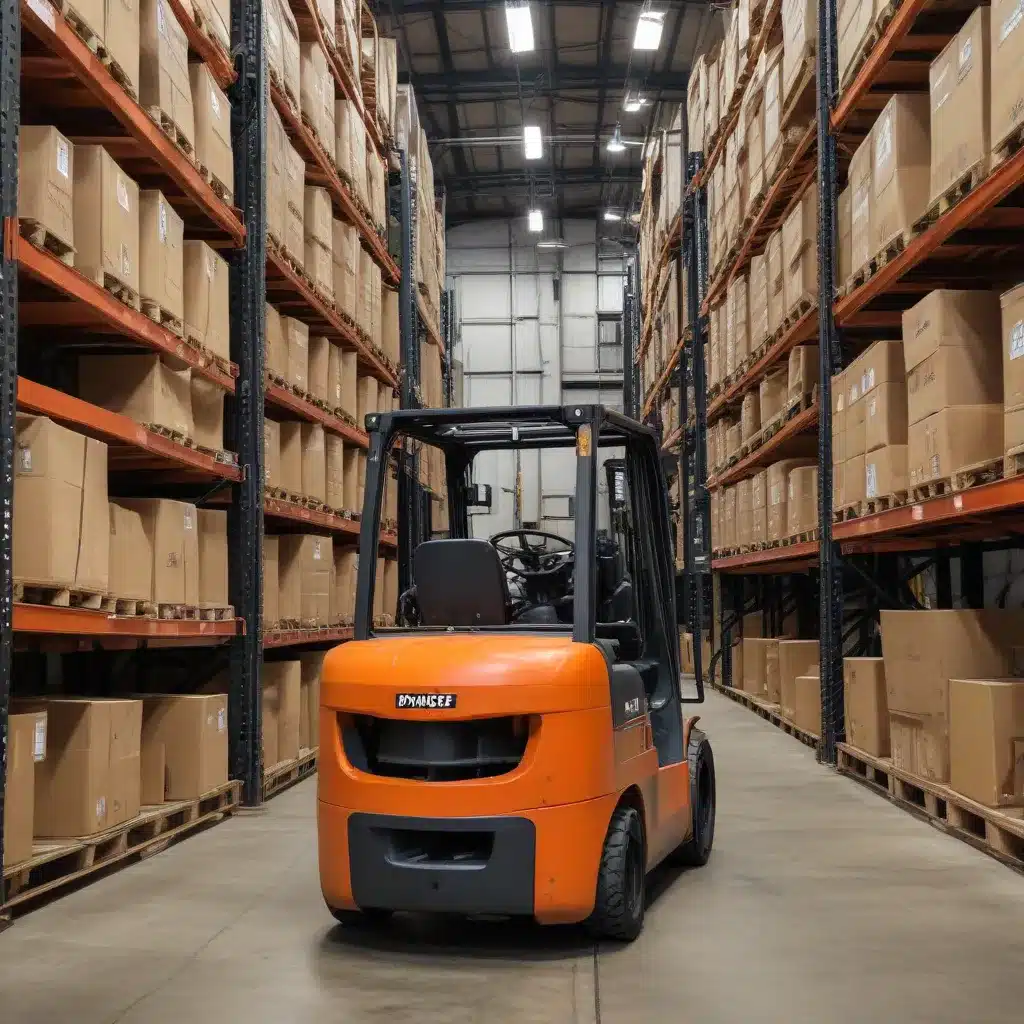
Understanding the Impact of Forklift Downtime
Material handling equipment (MHE), including forklifts, is the backbone of warehouse and logistics operations. These versatile machines play a crucial role in the efficient movement, storage, and transportation of goods. However, like any machinery, forklifts are susceptible to unexpected breakdowns and malfunctions, leading to costly downtime.
Forklift downtime can have a significant impact on a warehouse’s productivity, safety, and bottom line. When a forklift is not operational, it disrupts the entire supply chain, causing delays in production, order fulfillment, and shipment. This can lead to dissatisfied customers, missed deadlines, increased labor costs, and wasted resources.
The consequences of forklift downtime are far-reaching and can be financially crippling. Siemens’ “True Cost of Downtime” report states that the average annual cost of unplanned downtime for each plant operated by a Fortune Global 500 firm is a staggering $129 million. Addressing the causes of forklift downtime and implementing proactive maintenance strategies are crucial for organizations to maintain operational efficiency and profitability.
Predictive Maintenance: The Key to Reducing Forklift Downtime
Predictive maintenance, powered by advanced data analytics, offers a transformative approach to managing forklift parts inventory and minimizing downtime. By continuously monitoring the performance and condition of forklifts, predictive maintenance algorithms can identify potential issues or failures before they occur, enabling maintenance teams to take proactive action.
Predictive maintenance leverages real-time sensor data, historical maintenance records, and performance analytics to predict when a forklift component or part is likely to fail. This allows maintenance teams to schedule repairs or replacements based on the actual condition of the equipment, rather than relying on rigid, time-based maintenance schedules.
Benefits of Predictive Maintenance for Forklift Fleets
Implementing a predictive maintenance strategy for forklift fleets can deliver a range of benefits for warehouse and logistics operations:
-
Reduced Downtime: By proactively addressing potential issues before they lead to breakdowns, predictive maintenance minimizes unexpected forklift downtime, ensuring continuous productivity and uninterrupted operations.
-
Cost Savings: Predictive maintenance helps organizations avoid the high costs associated with emergency repairs, rushed parts procurement, and lost productivity due to unplanned downtime. It also extends the lifespan of forklift components, reducing long-term replacement costs.
-
Improved Safety: With fewer unexpected breakdowns, predictive maintenance enhances the overall safety of forklift operations, reducing the risk of accidents and injuries to operators and workers.
-
Enhanced Inventory Management: Predictive analytics can help warehouse managers accurately forecast parts and consumables required for maintenance, enabling them to maintain an optimized parts inventory and minimize costly stockouts.
-
Increased Efficiency: By streamlining maintenance schedules and minimizing disruptions, predictive maintenance improves the overall efficiency of forklift fleet operations, allowing warehouse managers to optimize workflows and resource allocation.
Implementing Predictive Maintenance for Forklift Fleets
Transitioning to a predictive maintenance approach for forklift fleets involves a strategic and collaborative process. Here are the key steps to implement a successful predictive maintenance program:
-
Assess Current Maintenance Practices: Conduct a thorough review of your existing forklift maintenance procedures, identifying areas for improvement and opportunities to incorporate predictive analytics.
-
Deploy Sensor Technology: Install a network of sensors on your forklift fleet to capture real-time data on equipment performance, including vibration, temperature, fluid levels, and other critical parameters.
-
Integrate Data Analytics: Leverage advanced data analytics and machine learning algorithms to continuously monitor forklift performance, identify anomalies, and predict potential failures.
-
Optimize Maintenance Schedules: Use the insights gained from predictive analytics to develop proactive maintenance schedules, ensuring that repairs and replacements are carried out based on the actual condition of the equipment.
-
Manage Parts Inventory: Utilize the predictive maintenance data to optimize your forklift parts inventory, ensuring the availability of critical components while minimizing excess stock and associated costs.
-
Empower Maintenance Teams: Provide comprehensive training and support to your maintenance technicians, equipping them with the knowledge and tools to interpret predictive maintenance data and execute proactive maintenance tasks.
-
Continuously Improve: Regularly review and refine your predictive maintenance program, incorporating feedback and incorporating new technologies and best practices to drive continuous improvement.
The Role of Industry Experts in Predictive Maintenance
Transitioning to a predictive maintenance model for forklift fleets can be a complex undertaking, requiring specialized expertise and industry-specific knowledge. That’s where consulting firms like HCO Innovations can play a pivotal role.
HCO Innovations, a leading management consulting firm, has extensive experience in warehouse optimization and forklift fleet management. Their team of experts leverages advanced data analytics, sensor technology, and predictive maintenance strategies to help organizations achieve significant cost reductions and operational efficiency.
By partnering with HCO Innovations, warehouse and logistics managers can benefit from a comprehensive suite of services, including:
- Forklift fleet assessments and optimization
- Customized predictive maintenance program design and implementation
- Real-time equipment monitoring and data analysis
- Optimized parts inventory management
- Maintenance team training and support
Through this collaborative approach, HCO Innovations empowers organizations to transform their forklift maintenance practices, minimize downtime, and unlock substantial cost savings across their warehouse operations.
Conclusion: Embracing the Future of Forklift Maintenance
In today’s fast-paced and competitive business environment, the ability to maintain a reliable and efficient forklift fleet is crucial for warehouses and logistics operations. Predictive maintenance, powered by advanced data analytics, offers a transformative solution to reduce forklift downtime, optimize parts inventory, and drive long-term cost savings.
By partnering with industry experts like HCO Innovations, warehouse managers can leverage cutting-edge predictive maintenance strategies to gain a competitive edge, enhance operational efficiency, and ensure the continuous success of their forklift fleet. As technology continues to advance, the future of forklift maintenance holds even greater promise, paving the way for a more proactive, data-driven, and cost-effective approach to equipment management.

